
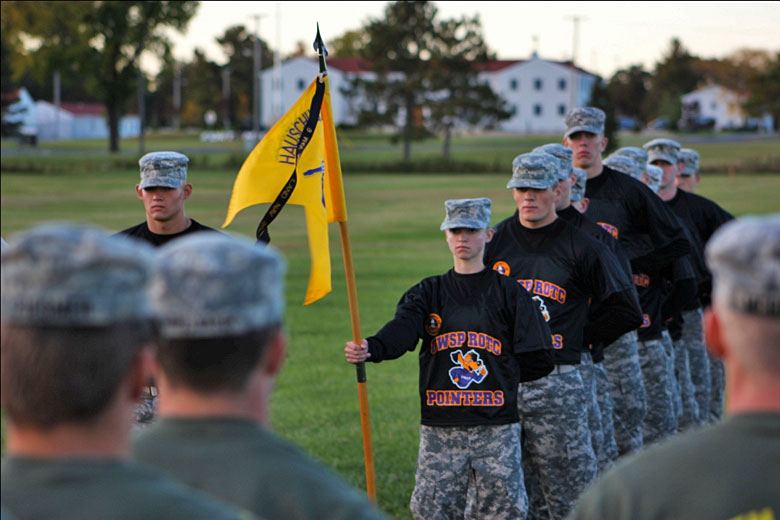
During the last weekend of September, Army ROTC cadets from universities across Wisconsin and northern Michigan descended on Fort McCoy for the annual Ranger Challenge Competition. The Ranger Challenge is an event that challenges cadets both physically and mentally, while testing their military knowledge and skills in a demanding team-oriented competition that enhances leader development and esprit de corps. The competition consists of Night Land Navigation, Army Physical Fitness Event, an obstacle course, One-Rope Bridge Challenge, weapons assembly/disassembly and marksmanship qualification, day land navigation, Maintenance Challenge, Medical Challenge, an assault course and finally, a 6.2-mile forced foot march.
The first event of the competition was Night Land Navigation. The teams each had three hours to navigate through the woods with a map and compass in an attempt to find 17 stakes. Each of these stakes is worth a point value based on the distance from the starting location; the further the stake, the more points that team would receive. Being there was a limited amount of time for the team to navigate to all 17 stakes, Team Pointer divided into four groups to find as many stakes as possible. At the completion of Night Land Navigation, Team Pointer was in fourth place with 240 out of 300 points possible.
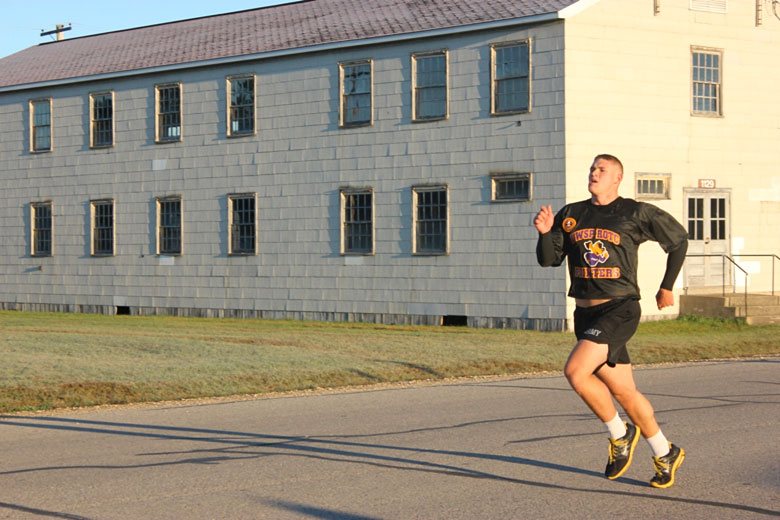
Saturday morning started at 6 a.m. with Team Pointer lining up to take the Army Physical Fitness Test (APFT). The APFT consists of three events: the push-up, the sit-up and a two-mile run. Each Cadet has two minutes to complete as many push-ups as possible, and after a 10-minute break, they have two minutes to complete as many sit-ups as possible. After another 10-minute break, the cadets must complete a two-mile run as quickly as possible. The top male scorer for Team Pointer was Brad Kawski, junior, a score of 297 points out of 300. The top female scorer for Team Pointer was Stefanie Wolosek, freshman, with a score of 287 points out of 300.

Immediately after the APFT, Team Pointer went to the Weapons Assembly/Disassembly and Marksmanship Qualification. The first event required each cadet to correctly disassemble an M-16 assault rifle in the shortest amount of time possible. Once each of the cadets had disassembled their weapon, they were then timed as they reassembled them. The next event for the team was individual marksmanship which measured the cadets’ ability to hit 30 stationary targets from a prone position and from a kneeling position. Team Pointer took fourth place in the event with 240 out of 300 points.
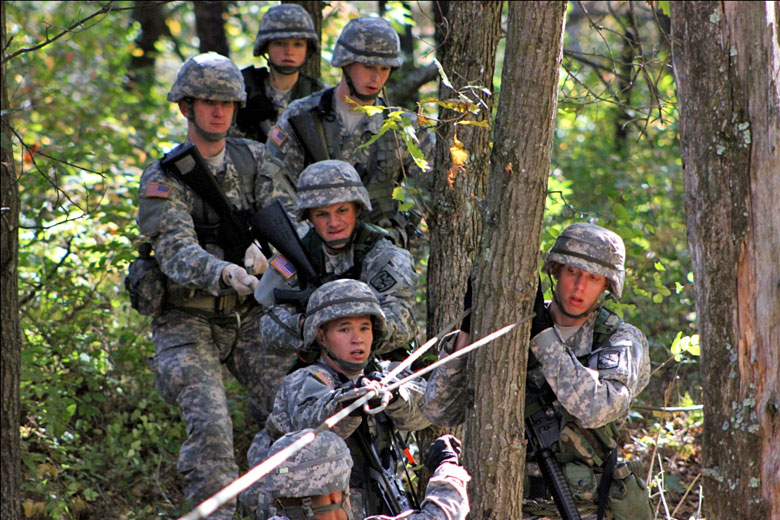
The next event was the One-Rope Bridge which required the team to correctly tie a rappel seat from a 12-foot section of rope and then construct a bridge over a small river with a 120-foot rope, with one cadet swimming across first to tie it off. After the bridge was constructed, the cadets were required to hook themselves to the bridge by their rappel seat and then pull themselves across the river without letting their bodies or any piece of equipment touch the water. Each of the teams competing would be required to construct two separate bridges across the river. The key to success is communication and strong team-work. Team Pointer did extremely well at this event with an average time of eight minutes which put them in third place.
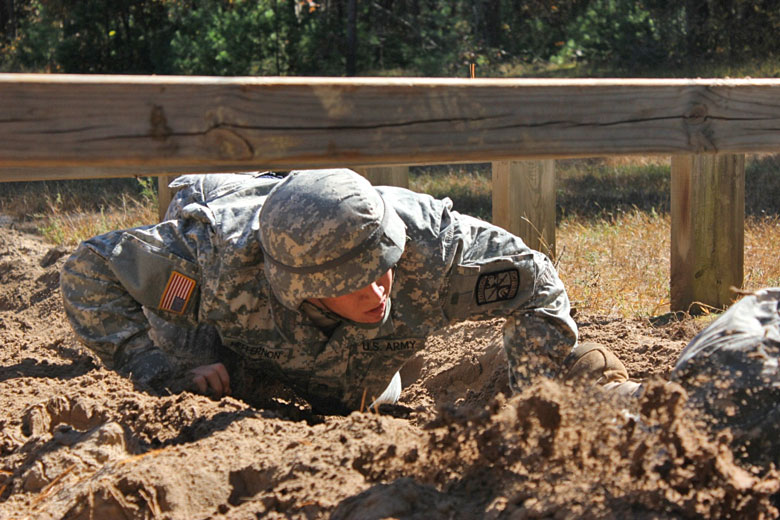
The next event Team Pointer had to tackle was the obstacle course. The obstacle course is a 400-meter long route with 17 different obstacles that each cadet would be required to negotiate in the shortest time possible. The obstacle course is very challenging and the most difficult obstacles the cadets had to face were climbing a 15-foot rope, vaulting over an eight-foot wall, and having to climb a 12-foot cargo net. Although the cadets had to negotiate each obstacle individually, the team couldn’t proceed to the next obstacle until each member of the team had completed the previous obstacle. Team Pointer did a great job of encouraging each other through the obstacles and finished the course in a solid fifth place.

After the obstacle course, the team moved to the southern part of Fort McCoy for the battle-focused events of the competition. The battle-focused events are dispersed over a five-mile loop. Teams have a choice of either moving along the road or they can navigate between the events cross-country. There are also seven navigation stakes that the teams could stop at to acquire additional points. However, each team needed to determine whether finding those additional points was worth the extra time as each team is timed on how long it takes to complete the entire course.
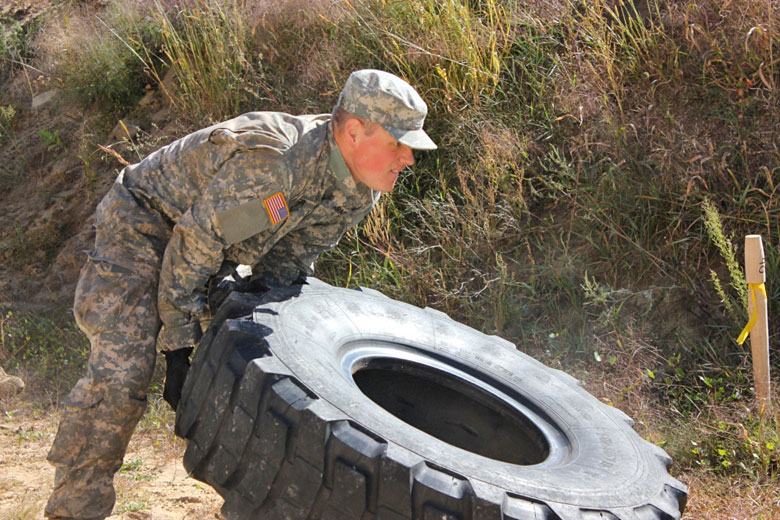
Team Pointer’s next event was the Maintenance Challenge. The scenario for the event was the team encountered a disabled Humvee that required each cadet on the team to retrieve a tire and transport the tire back to the vehicle by flipping it end over end. After moving the tire, the team would then be required to pull the Humvee a distance of 120 feet. Team Pointer did an excellent job and finished in 3rd place for the event.
Next up for Team Pointer was the Assault Course Challenge. The team was required to split into groups of two and engage enemy targets with an inert hand grenade in the quickest time possible. The inert hand grenade weighed about four pounds, and each cadet was required to throw their grenades a distance of 100 feet. Team Pointer had a solid showing during the challenge and beat its arch rivals UW-Stout.
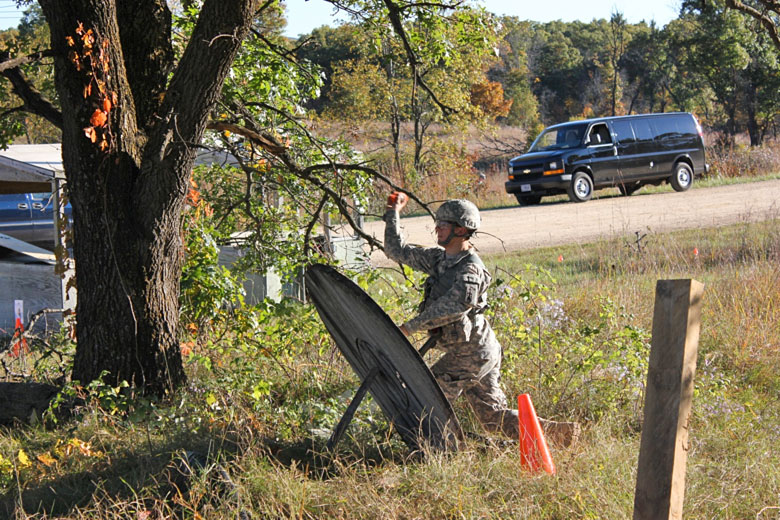
The last event for the day was the Medical Challenge. Each team would be required to evaluate a simulated casualty for life-threatening injuries, treat the casualty’s injuries and then carry the 185-pound casualty on a stretcher over a ½-mile hill-filled loop. After a long day of constant physical activity this event was very demanding. Team Pointer showed great teamwork with Cadet Jeff Hensley, sophomore, evaluating and treating the casualty. The team worked incredibly well throughout the ½-mile loop changing out stretcher bearers.
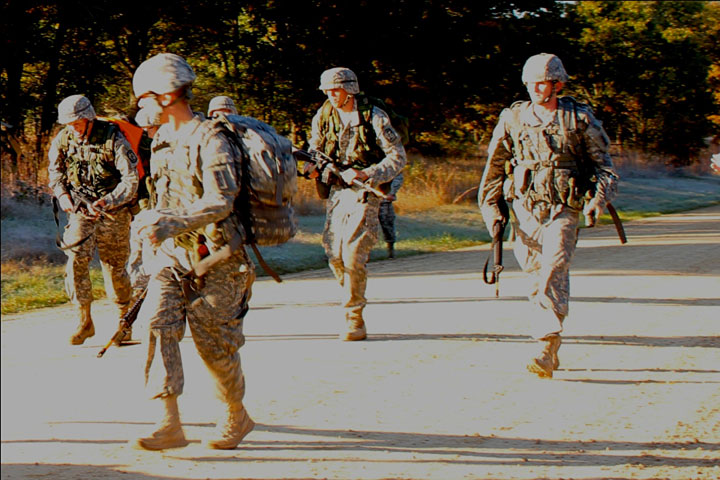
The first event on Sunday morning and the last event of the competition was the 6.2-foot march while carrying a 35-pound backpack. By this point of the competition many of the cadets on Team Pointer were physically exhausted and were suffering from blisters on their feet. However, all of the cadets showed a great amount of determination and the team completed the foot march in one hour and 33 minutes.
Overall Team Pointer did an excellent job at the 2011 Ranger Challenge. The team worked extremely well together and attained an overall finish fourth place. Each of the cadets was challenged physically and mentally. They also learned the importance of teamwork and supporting their fellow teammates. Most importantly, Team Pointer lived up to their motto “Beat Stout!”

